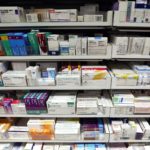
Illinois Senate to return to in-person committees

The Illinois Senate will hold in-person committee hearings when it returns to Springfield this week.
The chamber, which has been holding virtual committees during the pandemic, will require a negative COVID-19 test and wristband for any person entering committees, galleries or Senate offices. Lawmakers, staff, and witnesses will need to be physically present in committees.
Face masks are encouraged but not required in the Senate areas of the capitol.
As of Thursday, 528 Illinoisans were in the hospital with COVID-19, down 18 from Wednesday and down 148 from the prior week.
Of the patients in the hospital, 88 were in intensive care units, down one from Wednesday and down 20 from the prior week. There were 35 patients on ventilators, down three from Wednesday and down 16 from the prior week.
The Illinois Department of Public Health reported 7,467 confirmed and probable COVID-19 cases last week, down 12.3 percent from the prior week. There were 123 new deaths reported last week, down 17.4 percent from the prior week.
The new cases bring the state total to 3,053,185, while the death toll increased to 33,198.
The seven-day average for new cases on Friday was 1,067, down 150 from the prior week. The seven-day average for daily deaths is 18, down three from the prior week.
The seven-day statewide positivity rate for cases as a percent of total tests is 1.3 percent. The seven-day statewide test positivity using the number of COVID-19 positive tests over total tests is 1.2 percent.
About 81.1 percent of eligible Illinoisans ages 5 and older have received at least one dose of a COVID-19 vaccine, while 72.2 percent are fully vaccinated.
Illinois vaccinators have administered 21,273,924 COVID-19 vaccines, per state data, including 4,226,205 booster doses. The seven-day average of doses administered is 8,104.
Nearly 60 percent of total doses administered went to white Illinoisans, while 15.7 went to Latinx residents, 11.1 percent to Black residents and 7.2 to Asian residents. About 3.1 percent went to those identified as “other races” while 2.4 percent are “unknown.”









